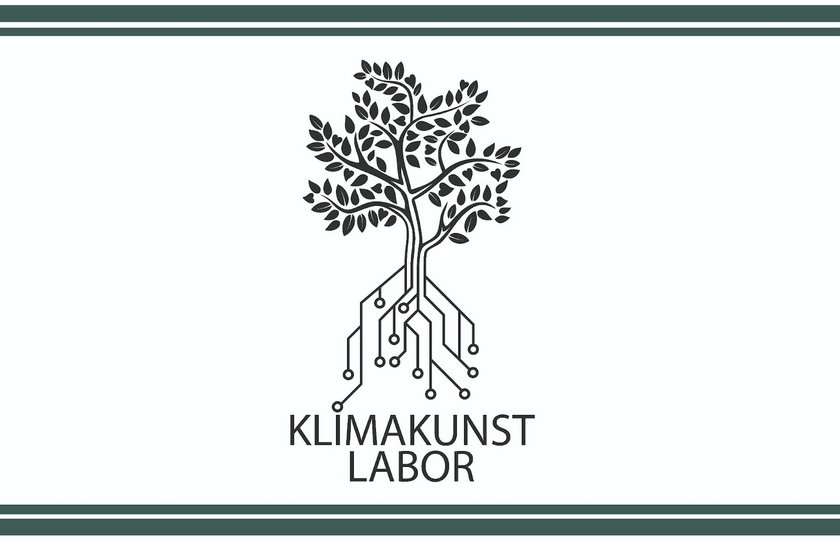KLIMAKUNSTLABOR 22

KLIMAKUNSTLABOR x MOABIT KLIMAFIT
June - September (multiple dates)
ZK/U BerlinSiemensstr. 27, 10551, Berlin, Germany
Workshops in Moabiter Stadtgarten
Sunday | September 18th 2022 | 2 - 6 pm
at ZK/U, Siemensstraße 27, 10551 Berlin
Free admission!
Featuring artistic, activist, and citizen science workshops: Wild Bees, Flower Meadows, New World of Colors and Mini Forests. Dance performance at 6 pm
Klimakunstlabor = Climate, Art and Laboratory?
The Moabiter Stadtgarten is suffering: From the consequences of climate change but also from the conflict of use between humans and nature. Soil and vegetation are struggling with severe silting and increasingly prolonged periods of drought. Small animals and insects in particular that use the park as a vital refuge in the urban concrete jungle, are now in need of our attention and support.
With the KLIMAKUNSTLABOR, a starting point will be set on September 18 to learn and think collaboratively about a climate resilient park for flora, fauna and culture.
In a joint kick-off at 2 pm, we will start with the topics of biodiversity and climate resilience in Moabiter Stadtgarten and learn about a green future: Urban Forest Gardens. There will be six stations spread throughout the Moabiter Stadtgarten to experience and create urban nature artistically, to explore the garden scientifically and understand its biodiversity, and to get involved in climate action. Wild bees, edible city, Tiny Forstests, change of perspectives, flower meadows or modular insect hotels: The newly gained knowledge of the participants and the different needs of the park visitors as well as urban nature will be collected on a knowledge board to create a vision of the future of Moabiter Stadtgarten. How can we, the neighborhood and guests of the park and the ZK/U, create a climate-friendly and resilient Moabiter Stadtgarten?
We are looking forward to learning and understanding our environment collectively with you! To change perspectives and to see new ways.
Contact: [email protected]
PROGRAM ON SEPTEMBER 18
2 pm
Welcome / lecture: Urban Forest Gardens - also in Moabit?
Stefan Koderisch [ZK/U] / Dr. Jennifer Schulz [Universität Potsdam]
2:30 pm
Workshops and waffles:
Research for Wild Bees – Designing Moabiter Stadtgarten together
Workshop bySusan Karlebowski [Museum für Naturkunde Berlin]
BUZZ FEST moabees – Building a Modular Art Hotel for Insects
Workshop by Bärbel Rothhaar [MoaBees - Kunst Werk Stadt Berlin e.V.]
Fantastic Color World of Insects – Photographing with Other Eyes
Workshop by Lorène Blanche Goesele [Erd(be)leben - iCollective e.V.]
Teeny-Tiny Forest, Super Big Effect – Planting a Tiny Forest
Workshop by Kiezwald e.V.
Lawns = Yawns. Let’s create a more sustainable wildflower meadow!
Workshop by Steve Rogenstein [The Ambeessadors] & Tash [Avant Garden Life] (Englisch)
Carbon-neutral waffles + coffee by Enno.
17:30
Exhibition & Networking – What do we need, what does the park need?
Evaluation with and by all participants.
18:00
Ancestor Tree II – Climate Dance Performance
Dance performance by KlimaTanzLab
////
The Klimakunstlabor is funded by the urban development programs "Lebendige Zentren und Quartiere" (Turmstraße Begrünungsprogramm) and "Sozialer Zusammenhalt" (QM project Moabit klimafit) as well as by the Stadtteilkasse Moabit-West and the Jugendmigrationsdienst im Quartier (Berlin Mitte).
MOABITER BAUMGESCHICHTEN // MOABIT TREE STORIES
Learning workshop from 27. Until 29. Of June 2022 for creative research on Moabit’s city trees, together with students of the Heinrich-von-Stephan-Gemeinschaftsschule.
Central results from last year’s Klimakunstlabor have been further developed for this year: During the learning Workshop Moabiter Baumgeschichten, students of Heinrich-von-Stephan-Gemeinschaftsschule will give voices to different trees in Beusselkiez and Huttenkiez by telling stories from the tree’s perspectives. These stories will be available to read and listened to through QR-codes stuck to the trees – so keep your eyes and ears open.


PROGRAM DESCRIPTION
lernen
Fakten erleben. Einfache Forschungsmethoden erlernen, Natur beobachten und Herausforderungen erkennen.
- Urbane Waldgärten - ein uraltes, neues Konzept der essbaren Stadt
Der Nutzungsdruck in Berlins Grünräumen ist hoch. Landschaftsplanerin Dr. Jennifer Schulz (Uni Potsdam) wird uns ein Konzept vorstellen, das zugleich Raum für die essbare Stadt, für Kultur, zum Lernen und Verweilen bietet: Der Urbane Waldgarten.
- Forschen für Wildbienen – Den Moabiter Stadtgarten gemeinsam gestalten
Unsere Wildbienenvielfalt und damit auch die Erfüllung der wichtigen Aufgabe der Blütenbestäubung sind gefährdet. Doch urbane Gemeinschaftsgärten können wichtige Rückzugsräume sein. Das Museum für Naturkunde Berlin erforscht daher gemeinsam mit der TU München diesen Lebensraum der Wildbienen - auch im Moabiter Stadtgarten. Susan Karlebowski (MfN Berlin) gewährt uns einen Einblick in die fragile Welt der wilden Bienen sowie den Forschungsprozess und bittet dabei uns alle um Mithilfe unsere Gärten bienenfreundlich zu gestalten.
Susan Karlebowski ist Stadtökologin und seit 2020 am Museum für Naturkunde. Ziel ihrer Arbeit ist es städtische Lebensräume zu verstehen, diese urbane Natur zu schützen und gleichzeitig darüber mit den Berliner:innen in den Austausch zu treten.
gestalten
Perspektivwechsel. Kreative Auseinandersetzung mit den Themen der Klimaresilienz, Emotionen nären und persönliche Verbindungen zur Natur aufbauen.
- BUZZ FEST moabees – Bau eines modularen Kunsthotels für Insekten
Wildbienen brauchen nicht nur die passenden Nektar- und Pollenpflanzen in ihrem Lebensraum, sondern auch eine Nistmöglichkeit. Dabei nutzen verschiedene Wildbienenarten ganz unterschiedliche Materialien. Bienenkünstlerin Bärbel Rothhaar (moabees) gestaltet und baut mit uns gemeinsam eine große Insektenwand an der Fassade des ZK/U. In insgesamt 12 Nischen soll alles zu finden sein: Platz zum Nisten, für Kunst und Information. Und keine Angst: Wildbienen stechen nicht und sie werden auch erst im kommenden Frühjahr einziehen.
- Phantastische Farbwelten der Insekten - mit anderen Augen fotografieren
Wovon ernähren sich die Insekten im Moabiter Stadtgarten, wenn die Blütenhochsaison langsam endet? Unter Anleitung von Lorène Blanche Goesele (Er(be)leben) werden wir mithilfe phantastischer Fotografieren von Details des Gartens die Welt aus Sicht der fliegenden Summer und Singer betrachten. Die kollektive Kunst wird am Knowledge-Board ausgestellt - gemeinsam mit dem Kunst-Leistungskurs der Theodor-Heuss-Schule.
Er(be)leben ist ein Projekt kultureller Bildung, das seit 2018 Kinder und Jugendliche dazu einlädt, sich als kreative Stadtbewohner*innen künstlerisch am Diskurs über den öffentlichen Raum zu beteiligen und sich mit in die Stadtentwicklung einzubringen. Gemeinsam mit den Jugendlichen entdecken wir den Stadtraum neu, verstehen ihn als Lernmöglichkeit und verwandeln ihn spielerisch zu einer Plattform für künstlerische Interventionen, die Vergangenheit und Zukunft zusammenbringen.
lernen & machen
- Klitzekleiner Wald, supergroße Wirkung – einen Tiny Forest pflanzen
Ein Wald inmitten der Stadt - sogar im Moabiter Stadtgarten? Theoretisch geht das. Der Verein Kiezwald e.V. klärt uns über die Pflanzmethodik des Tiny Forests auf, die ursprünglich aus Japan und Indien kommt. Mit den Parkgästen wird anhand eines kleinen Testfelds ein exemplarischer Mini-Tiny Forest angelegt und über eine große mögliche Fläche diskutiert. Ob das Projekt vielleicht schon im nächsten Jahr umgesetzt werden kann, hängt von vielen Faktoren ab, die wir zusammen betrachten möchten. Dazu gehören der Boden, den wir ebenfalls gemeinsam untersuchen werden, und die Bedürfnisse der Insekten, Vögel und Menschen.
Der Kiezwald e.V. ist ein Berliner Verein, der unter Bürgerbeteiligung Miniwälder in der Stadt pflanzt. Die gemeinsame Planung, Anlage, Pflege und Beobachtung schafft Gemeinschaft und leistet unter Anwendung von Citizen Science einen wertvollen Beitrag zur Umweltbildung.
machen
Aktivismus. Einfach mal mit anpacken, praktisch die Regeneration des Stadtgartens mitgestalten, die Natur erfahrbar machen und ein Teil des Stadtgartens werden.
- Lawns = Yawns. Let’s create a more sustainable wildflower meadow!
Spring blooms, summer matures and autumn finally sets the table. The vegetation of Moabiter Stadtgarten already has a lot to offer; nevertheless, in some areas, wild nature could be given higher priority and more care. Following a global trend in sustainability and pollinator conservation, we'll convert a parcel of grassy lawn into a colorful, native wildflower meadow that will provide food and shelter for the little critters that help make 70% of the food we eat. Which wildflowers provide them with the most nectar and pollen? Why have specific species of plants been selected? Why is a wildflower meadow preferable to a lawn? Together with Steve Rogenstein from The Ambeessadors, a bee expert and conservationist from Moabit, and Tash from Avant Garden Life, a self-sufficient herbalist, forager and artist, we'll create seed bombs — one for you, one for the bees! — and prepare and plant a section of the meadow as a pilot program for potential future expansion. (These two workshops — seeds bombs, wildflower meadow — will be in English.)
staunen
- Ancestor Tree II – Tanzperformance
This is a ritual to honor trees as part of our family. Ancestor Tree is our grandmother, grandfather, auntie, father, daughter - they are our inner child and our higher self. A gender queer being encompassing all the care, protection, and wisdom we need to reimagine the world we live in today. How can we be aware of this support that’s always been there? We honor them, our tree ancestors - we dance, we sing, we breathe as ways of being in reciprocity.
The ritual ‘Ancestor Tree’ as a film was created by Sophie Spiral in 2021 and will be further developed as a performance by this year’s collective KlimaTanzLab. In KlimaTanzLab Performers of two collectives come together: from the ‘welcome home collective’ and the Tempelhofer Feld Performers. Sophie Spiral and Elisabeth Lehmann will lead the performance. People are invited to participate.






